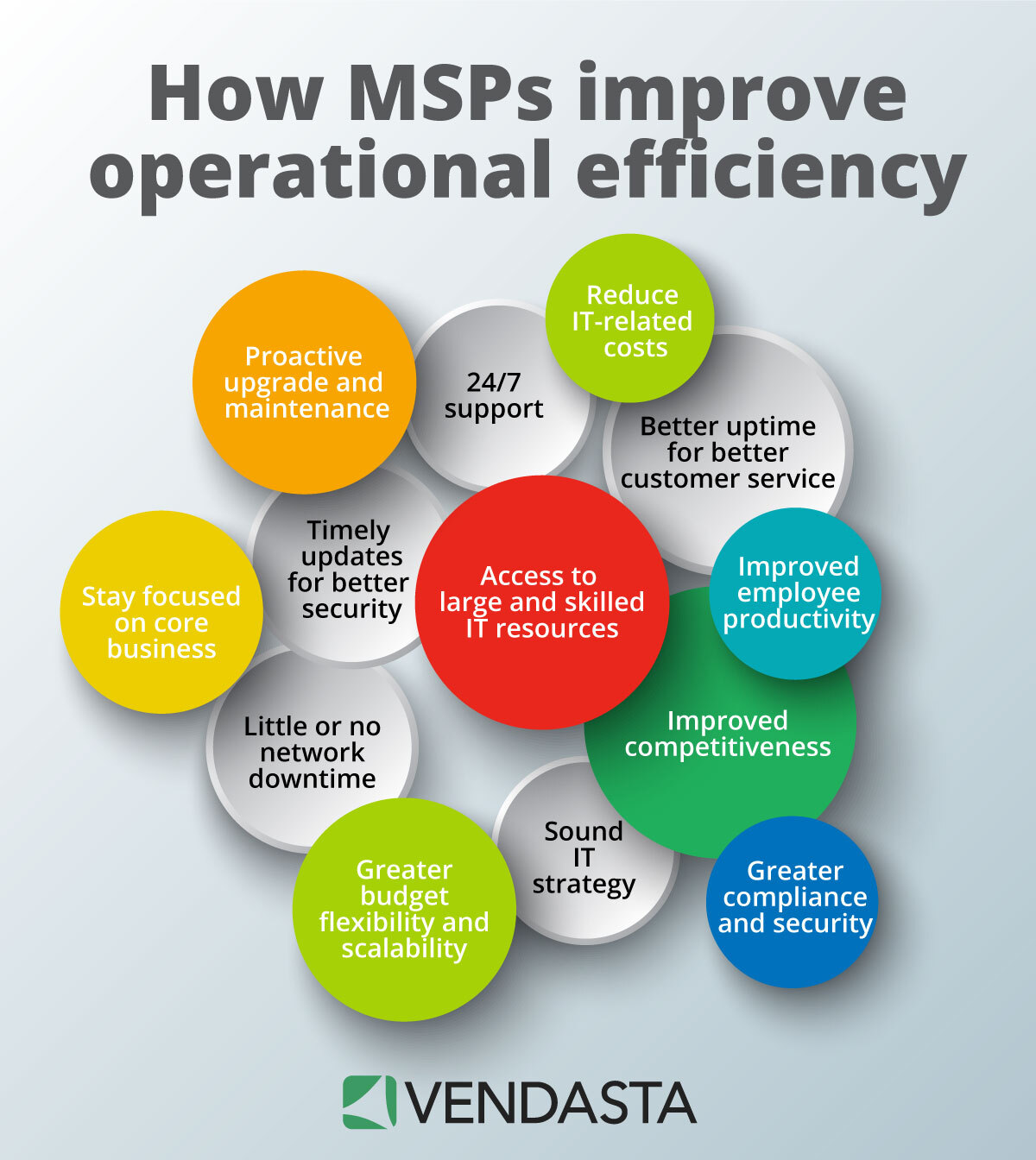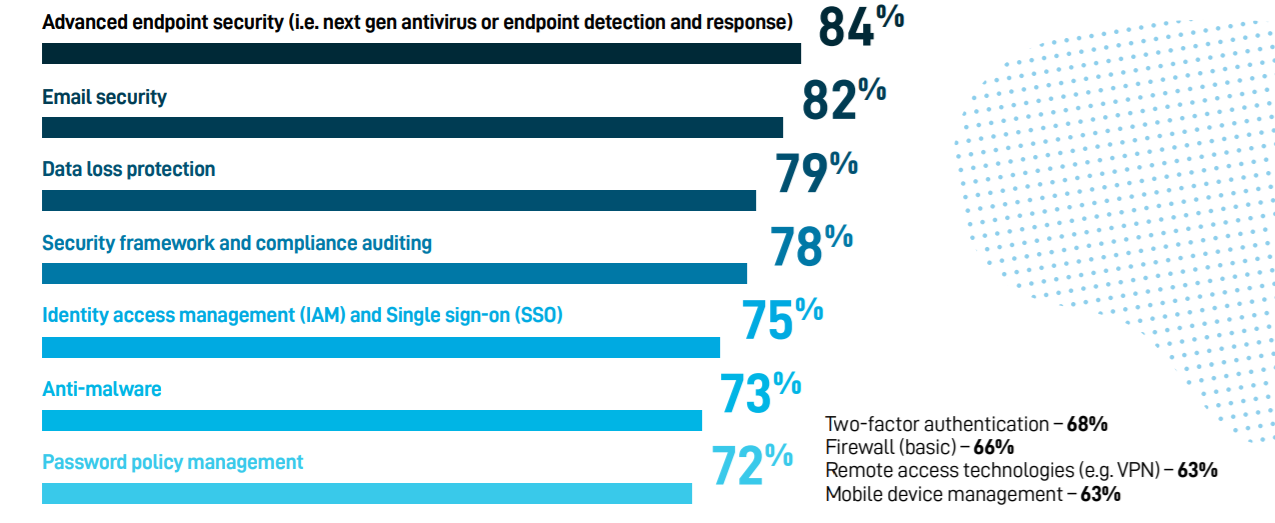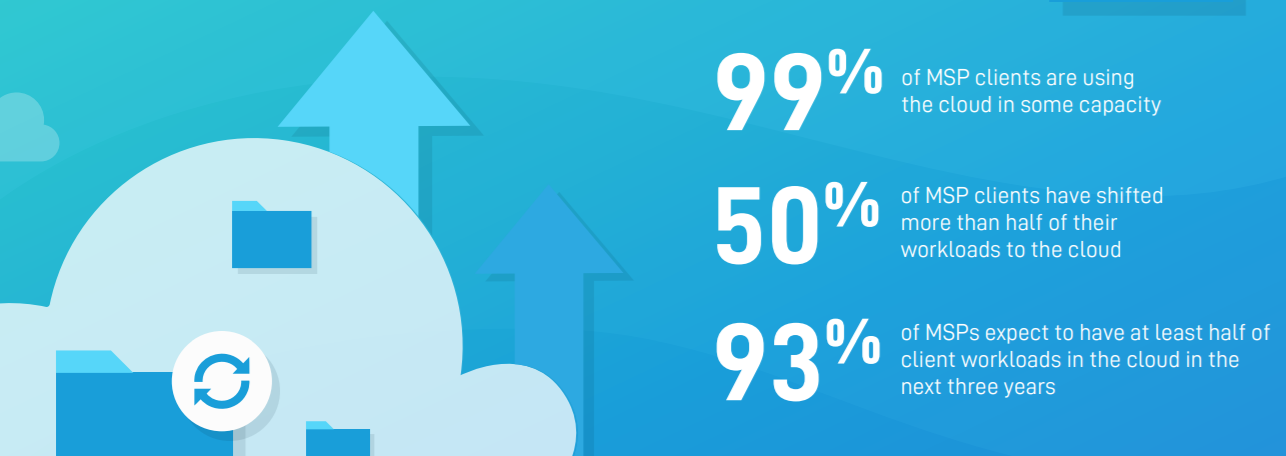Are You a Managed Service Provider? Here are the Top Five MSP Growth Drivers
With IT becoming an integral part of all businesses, let’s look at some of the primary drivers for MSP growth in a post-pandemic world.
The year 2020 changed the business landscape forever. The forced transition to remote work and ecommerce made organizations more reliant on IT services. Be it for setting up the IT infrastructure for a business that didn’t have a digital presence, or managing everyday operations, hardware and software updates, data management, cybersecurity concerns and more. Naturally, everyone’s best friend were the managed IT service providers (MSPs).
Explore expert insight on the opportunities and challenges MSPs and IT professionals face in 2022 and beyond. Download the ebook "The next generation of MSPs" now to learn how to capture more of the expanding market.
As a result, the MSP industry was able to bounce back much quicker than other industries. A MarketsAndMarkets (M&M) report estimates the global MSP is valued at $242 billion currently and expected to reach $354.8 billion by 2026.
“Every business had to go remote, and they leaned on their IT departments or their outsourced IT departments to help them do that,” says Andrew Down, director of sales (IT channel, MSP/VAR) at Vendasta.
RELATED READ: What is MSP Marketing and Why MSPs Need a Dedicated Marketing Strategy?
Down, however, underlines that it wasn’t all rosy for the entire MSP world since a lot of industries suffered heavily due to the pandemic and are still struggling to get back on their feet. As a result, many MSPs felt the heat and are still facing some challenges. “COVID led to some of the companies going out of business or having to scale back costs. So, for the MSP business it depends on who their target clients were/are. For instance, if an MSP was servicing the restaurant industry, it would have been hit hard. But those servicing the government sector or healthcare would have been busier than ever,” he elaborates.
In any case, the underlying point is in every industry, businesses needed to get online and needed new digital tools, and this is where MSPs became critical. Now, with almost every business survey and forecast predicting that some of these trends such as online shopping, remote work or cloud adoption will be irreversible, the MSP business landscape looks more interesting than ever before.
Let’s look at some of the primary drivers for MSP growth.
#1 Operational efficiency
There's no debate that digital tools improve operations efficiency of businesses, and having proper IT is integral to that. Good IT infrastructure comes with proper management and maintenance. To ensure that IT systems are working properly, a business needs to invest a lot of time in maintaining and upgrading them, which typically eats into a large chunk of the inhouse IT departments’ time. Things get particularly tough for small and medium businesses (SMBs), who often work with skeletal staff and don’t have big IT departments, or worse still don’t have any at all. Working with an MSP means all the maintenance and upgrading jobs are outsourced and SMBs don’t need to worry about maintaining their IT systems or updating and servicing software and hardware.
This also brings with it proactive services. An MSP’s job is to constantly monitor the state of IT infrastructure and network of their clients, and replace equipment before businesses and services are disrupted. This means seamless customer services, little or no downtime and no costly cycle of repairs.
With customers demanding better and more personalized services, it’s imperative for businesses to get their systems and networks up to date. Hiring an MSP not only addresses this issue, but also ensures that businesses can focus on hiring more sales, product and customer service resources rather than having to worry about hiring IT talents. An MSP can provide organizations access to the most experienced minds in IT without the added expense of another employee.
Increasing digitalization will be the primary factor driving growth in MSP business.
#2 Rising cybersecurity risks
IT systems come with their share of headaches, and cybersecurity is one of the biggest concerns for businesses. Even before the pandemic struck, SMBs were highly vulnerable to cyberattacks. The 2019 Global State of Cybersecurity in Small and Medium-Sized Businesses report underscored growing cybersecurity concerns, illustrated through the year-on-year trends dating back to 2016 — 76 percent of companies in the United States experienced some form of cyberattacks in 2019, up from 55 percent in 2016, while 69 percent reported an incident that resulted in the loss of sensitive information versus 50 percent in 2016. Globally, the numbers were 66 percent and 63 percent, respectively.
SMBs need security expertise now more than ever, but many are simply unable or unwilling to hire in-house security specialists. A January 2020 research by BullGuard shows 43 percent of SMBs lack any type of cybersecurity plans while 23 percent don’t use any endpoint security protections. And the costs are huge in case of an attack. According to IBM and the Ponemon Institute’s The Cost of Insider Threats Global Report 2020, the average cost of an insider-related cyber incident for SMBs was $7.68 million.
“Everybody’s vulnerable, now more than ever. Every company that is online, no matter the size, complexity, geography or business, faces certain risks that they need to mitigate,” says Alex Ryals, vice-president of security solutions at Tech Data.
SMBs have limited manpower and resources – they can’t hire in-house security teams, nor do they have enough money to purchase expensive security solutions. The only way to achieve this is by working with an MSP. IDC’s Worldwide Managed Security Services 2020 Vendor Assessment finds organizations are increasingly turning to MSPs to deliver security expertise, spanning managed security and complementary services to assist in preparing, detecting, and responding against future attacks.
Datto’s Global State of the MSP Report 2021, a survey among 1,800 MSPs globally, found that more than 33 percent of the respondents believe security solutions present significant new business opportunities.
The specific security services offered by the responding MSPs vary, but end point and email security technologies topped the list, and anti-malware software wasn’t far behind, pointing to the need for a multi-faceted approach to ransomware protection. Data loss prevention, security and compliance auditing, and access management tools were prevalent, reflecting the variety of threats SMBs face.
“That's definitely an area that every MSP should be getting proficient in, getting certified in, getting a tech stack around that,” says Vendasta Special Projects Advisor Chris Fossenier.
Fossenier points to the fact that increase in remote work and rise in the use of edge devices have increased the risk potential of networks. “Mitigating that risk is important, as well as creating awareness around that. As businesses get more educated, they will consider investing in mitigating those risks more realistically. So that's a sector that will drive MSP growth rapidly,” he adds.
#3 Remote work
During the early days of the pandemic, many MSPs saw their clients shifting to a work-from-home scenario. For them, potential revenue loss was likely offset by helping clients “go remote”, the transition to SaaS applications, or moving workloads into the cloud.
More than a year down the line, work from home is becoming a norm. It's likely that even in a post-pandemic world, now that they have discovered the positives of remote work – happy employees leading to greater productivity, wider talent pool to choose in the absence of geographic limitations, and reduced cost of infrastructure and logistics – many businesses will want to continue with the trend. Then there are many who are switching to a hybrid option. Whether permanent or part-time, remote work demands the right tech. Managing IT-related problems of employees in varied locations and varied time zones could be difficult and a distraction for an SMB when all they want to do is focus on serving their customers and generating revenue. However, without proper and regular assistance from IT teams, it may be challenging for remote workers to deliver their optimum, especially when they face hardware or software issues.
Further, remote work needs the right communication tools. They also need shared drives and chat systems where to collaborate with each other without accidentally overwriting or deleting files. All this requires the right remote assistance software, and most importantly the right training for the employees.
But figuring out which tools are most suited for the team and how they should use it could be difficult for an SMB to figure out. An MSP can identify the products that an organization needs most and train employees on such tools before full deployment.
Down points out that remote work has also helped MSPs to demonstrate to their SMB customers the possibility of remote support. “SMBs now know instead of always expecting a resource on-site, it’s possible to get things done remotely. This is a big win for the tech industry,” he says.
“Now that the panic and rush from early 2020 has subsided, organizations are seeing the potential efficiencies with remote or hybrid models. How MSPs support their clients’ diverse needs, and keep up with demand on key hardware/software (i.e. laptops, webcams, etc) is more important than ever. Finding that sweet spot of efficiency, security and convenience,” he adds.
As more and more businesses adopt and promote remote and hybrid work environments, MSPs can really be a great help filling the tech gap.
READ this blog on What are MSP Marketing Challenges and Six Ways to Fix Them
#4 Migration to cloud
A Gartner study estimates global public cloud spend to increase by 18% this year, with 70% of organizations increasing cloud spending to support a connected workforce. “The pandemic validated cloud’s value proposition,” says Sid Nag, research vice president at Gartner. “The ability to use on-demand, scalable cloud models to achieve cost efficiency and business continuity is providing the impetus for organizations to rapidly accelerate their digital business transformation plans. The increased use of public cloud services has reinforced cloud adoption to be the ‘new normal,’ now more than ever.”
Naturally, use of cloud by MSPs have finally gone mainstream. According to the Datto report, 99 percent of MSP respondents said their clients have shifted workloads to the cloud. While nearly half of them said they have 50-70 percent of their clients in the cloud, two in five said their clients have 25-50 percent of workloads in the cloud today. Almost all respondents said at least half of their clients’ workloads will be in the cloud by 2024. Not surprisingly, on-premises server use is in decline with only 5 percent of MSPs expect on-premises server use to increase over the next three years.
“If you go back a few years, MSPs really had it easy because a lot of companies were using servers and computers in their offices, and they still needed to connect to the Internet. While they might have been using a couple cloud apps, a lot of that was still within the network. The MSP would handle the licensing for Windows, the installation, the maintenance and backups.They were the one-stop shop for everything a business needed,” says Fossenier.
But now, MSPs have to compete in a broader spectrum because of things moving to the cloud. “Now, no one really buys accounting software from an MSP anymore because they can just go directly to the cloud version of their accounting software. Some smaller businesses still might use something like Dropbox instead of Google Drive or OneDrive. But then they are dealing with that challenge of competing with the cloud,” says Fossenier.
As cloud emerges, more and more MSPs have to shift to a “how-do-I-become-a-cloud-expert” mode, he says. However, any MSP on the road to adopting cloud offerings needs to make sure they have sufficient resources, especially skilled personnel with sufficient expertise in both big cloud providers like Google, AWS and Azure, and smaller cloud-based services such as those for backup and DR or DBaaS among others.
#5 Increasing complexity of IT
As the technologies advance rapidly, IT and communication projects are getting more complex than ever before. Businesses can leverage third party skills and expertise by deploying MSPs for effective management of multi-vendor and multi technology environments. Managed IT service providers are also updated on new cutting-edge tech, and often provide consultancy and updating of services as part of their business model. As they take over all the contracts and management relating to the infrastructure of the business, upgrades of current dated infrastructure can be done with minimum cost.
At a glance it may appear that MSPs offer simple services that involve outsourced IT support. However, their role is becoming increasingly significant for businesses as the technology used by them is becoming inherently more complex. Further, as Artificial Intelligence and automation tools become mainstream, SMBs need help with deploying and managing such complex tech.
For simple IT-related management and monitoring, automation is becoming a popular and cost-effective choice. MSPs use professional automation tools to support these services, which an SMB may find difficult to handle. These tools allow MSPs to track the progress of tickets raised in problem areas, or monitor the amount of time spent on each task, thus helping them to budget costs or save time and resources.
In conclusion
On the MSPs’ part, Down says it is important for them to do more with less now more than ever. “One of the best ways to do this is by streamlining their software stack and outsourcing strategic work to find new revenue streams. They can partner with a major service provider like Vendasta to take on more clients, especially those with different needs, instead of investing in recruiting more heads or buying new tech,” he says.
The fast-changing business landscape is also opening up new opportunities. For instance, Down says SMBs are continuously looking to streamline their vendors and MSPs have a fantastic opportunity to offer more services (i.e. digital marketing) to these customers. This again can be done by partnering with someone like Vendasta and making use of all the white label tools and services.
As the world of technology gets more complex, it’s the responsibility of MSPs to help clients navigate the road well.







